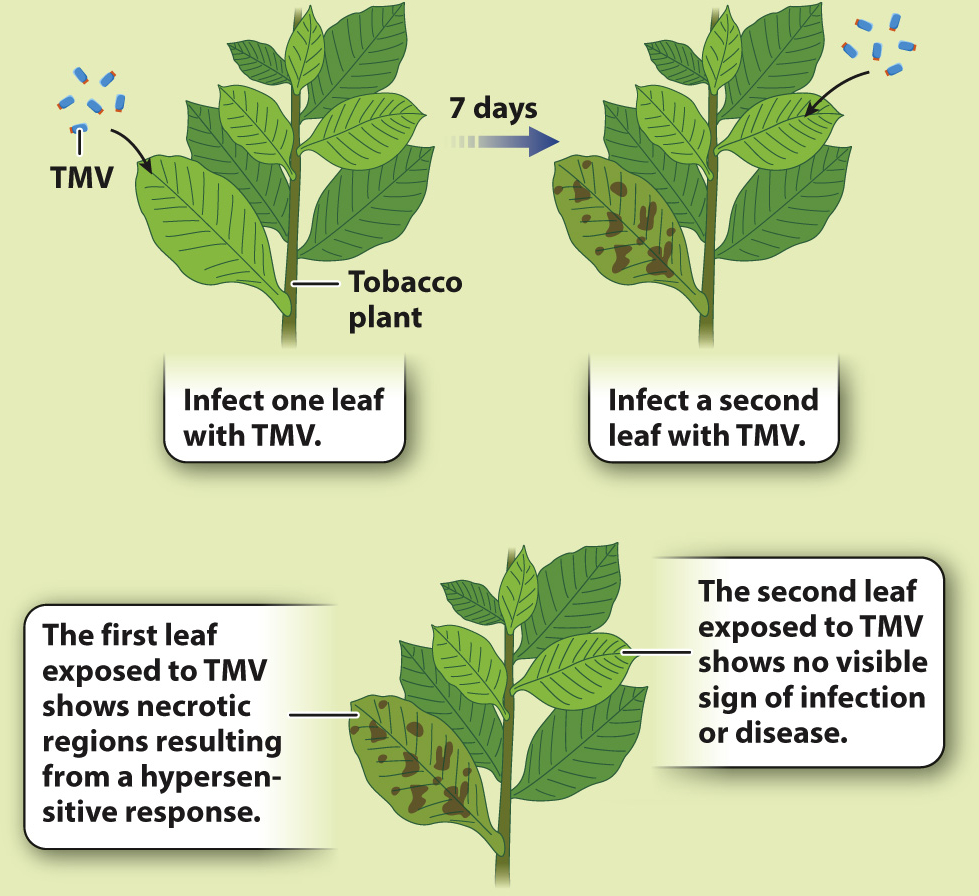Mobile signals trigger defenses in uninfected tissues.
In 1961, American plant pathologist A. F. Ross reported that when individual tobacco leaves were infected with the tobacco mosaic virus (TMV), they developed necrotic patches characteristic of a hypersensitive response. However, when uninfected leaves of the same plant were subsequently exposed to the virus, they suffered little or no damage (Fig. 32.7). Ross called this ability to resist future infections systemic acquired resistance (SAR). Initially reported for viral infections, SAR occurs in response to a wide range of pathogens, including bacteria and fungi.
HOW DO WE KNOW?
FIG. 32.7
Can plants develop immunity to specific pathogens?
BACKGROUND Tobacco is susceptible to an infectious disease that causes its leaves to turn a mottled yellow, hence the name of the disease—
HYPOTHESIS Plants that survive infection with tobacco mosaic virus (TMV) have acquired immunity and therefore resist further attack.
EXPERIMENT American plant pathologist A. F. Ross infected one leaf on a tobacco plant with TMV. One week later, he exposed another leaf on the same plant to the virus.
RESULTS Plants that had been previously exposed to TMV showed no signs of infection when exposed to the virus a second time.

CONCLUSION Tobacco leaves that have never been exposed to TMV can acquire resistance to the pathogen if another leaf on the same plant has been previously exposed. This result indicates that a signal has been transmitted from the originally infected leaf to the undamaged parts of the plant, and that the transmitted signal subsequently triggers the development of an immune response that protects the plant from further infection.
FOLLOW-
SOURCE Ross, A. F. 1961. “Systemic Acquired Resistance Induced by Localized Virus Infections in Plants.” Virology 14:340–
How do uninfected leaves acquire resistance to pathogens? One hypothesis is that a chemical signal is transported from the infected region through the phloem. This chemical signal then triggers the expression of genes encoding many of the same proteins that defend against the pathogen in infected cells. The identity of the mobile signal has proved elusive, but experiments show that salicylic acid—
Up-
Quick Check 2 How does the plant hypersensitive response differ from systemic acquired resistance (SAR)?
Quick Check 2 Answer
In the hypersensitive response, plants block off an infected area. In SAR, plants send a signal to uninfected tissue, enabling it to mount a defense and prevent infection.